2018 Ackling Dyke formation
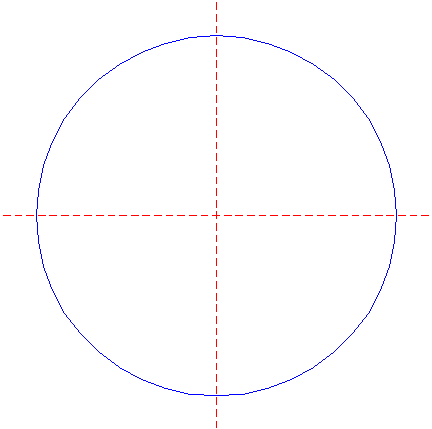
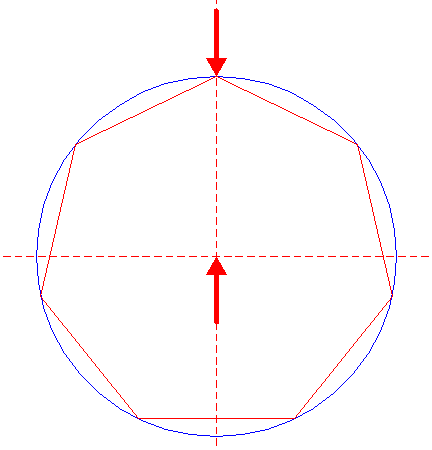
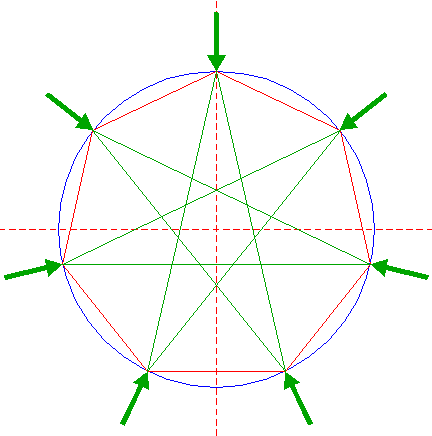
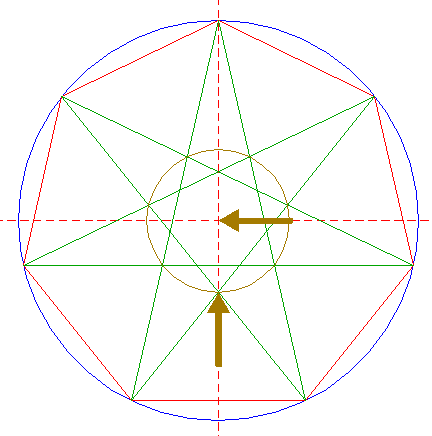
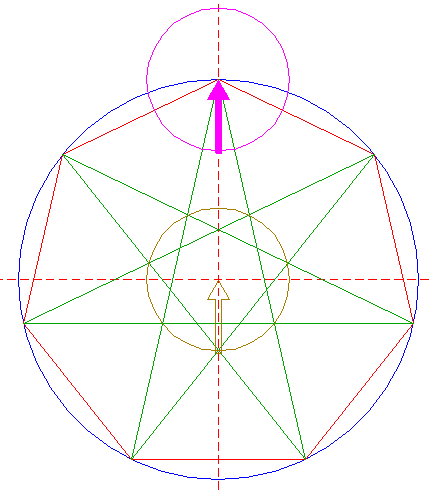
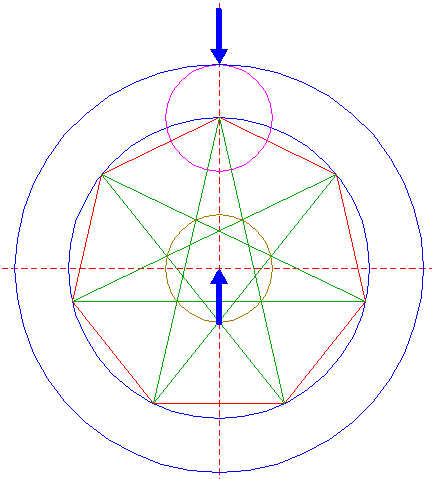
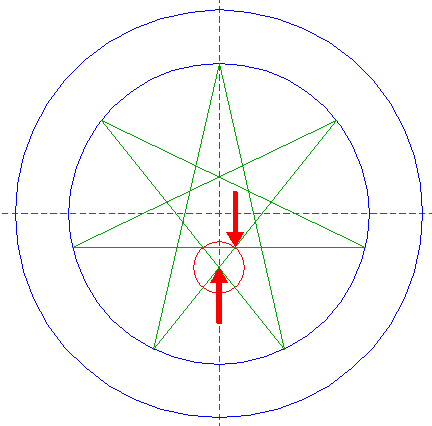
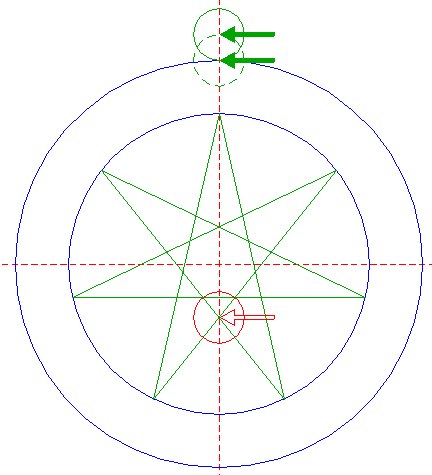
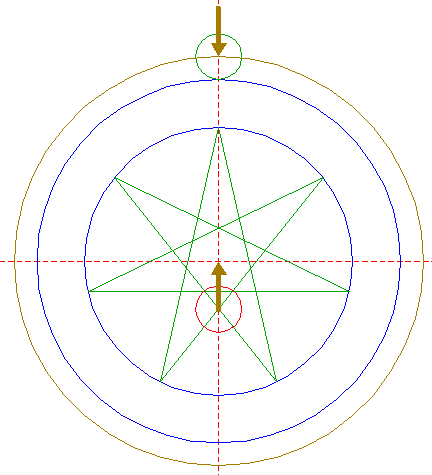
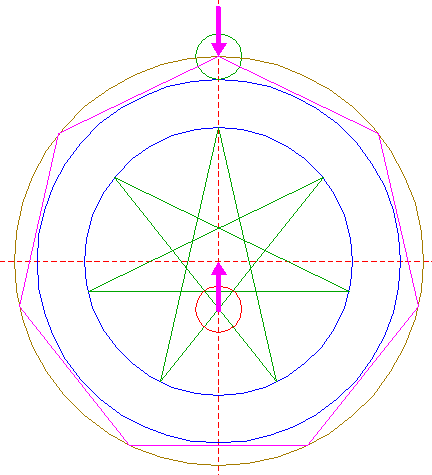
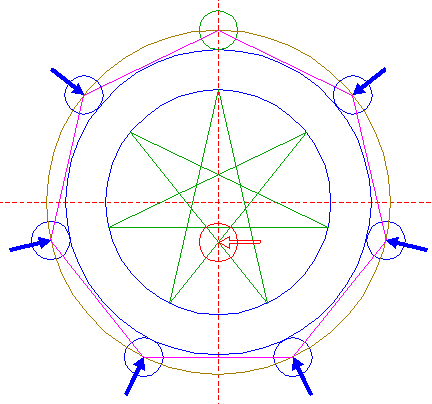
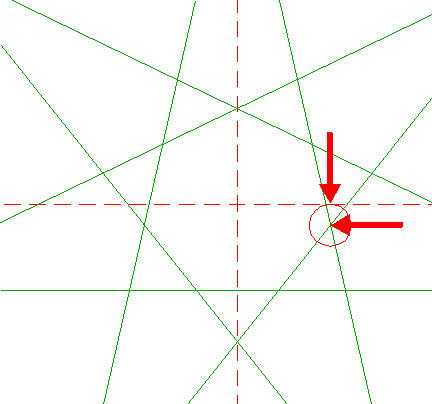
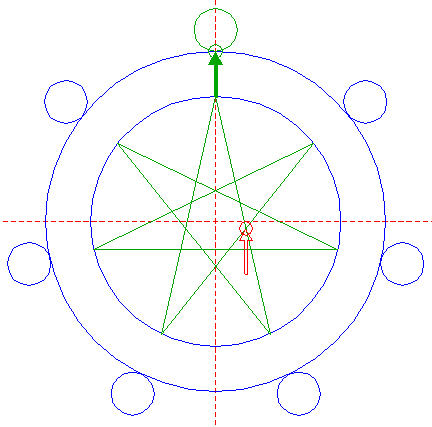
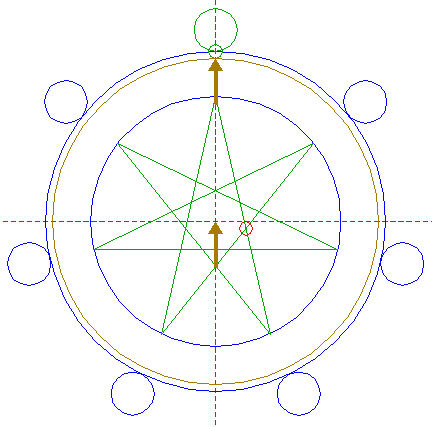
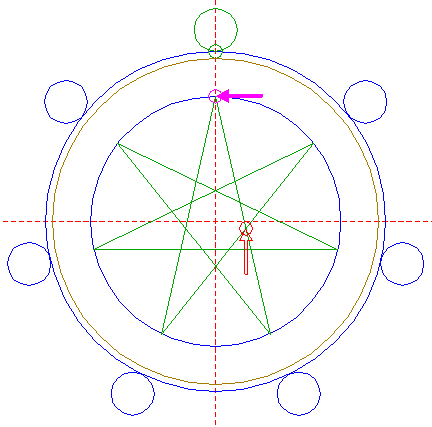
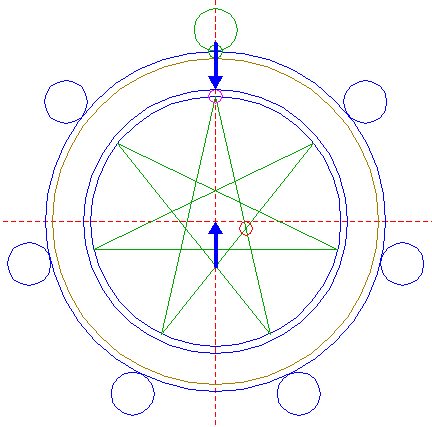
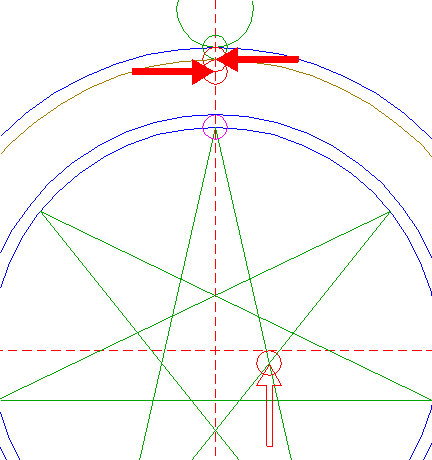
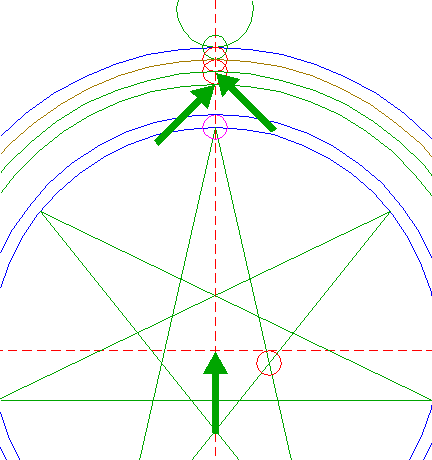
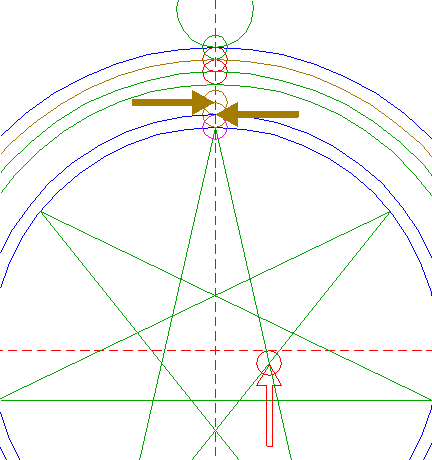
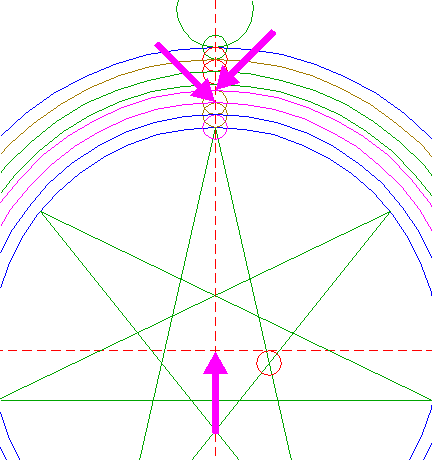
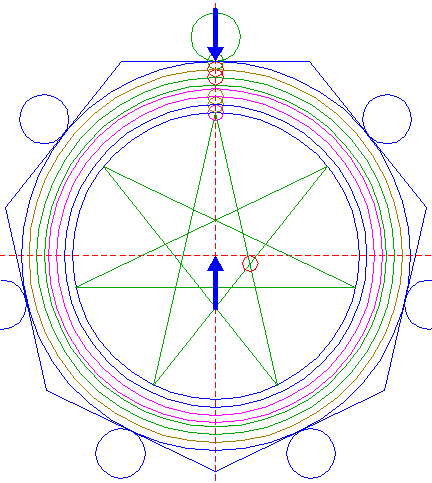
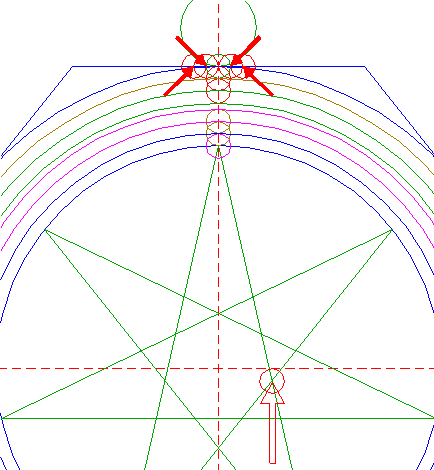
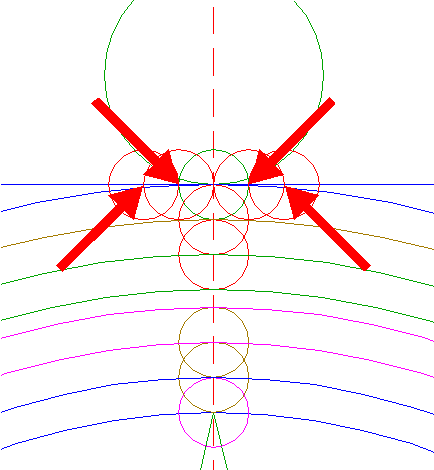
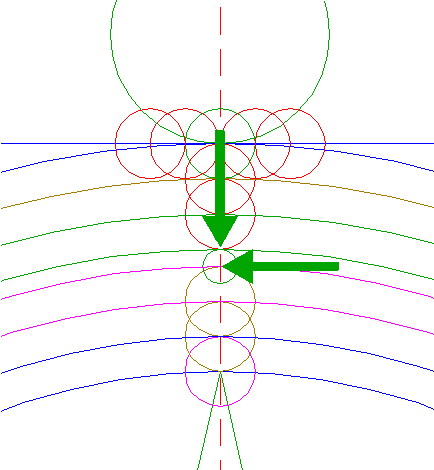
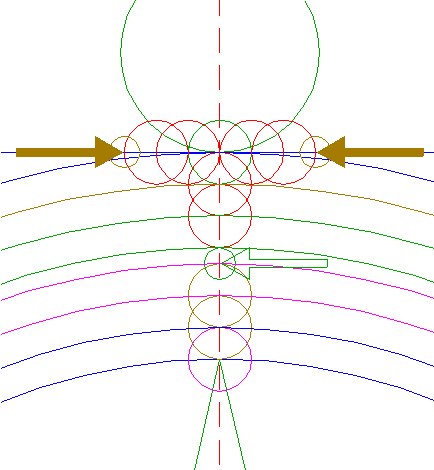
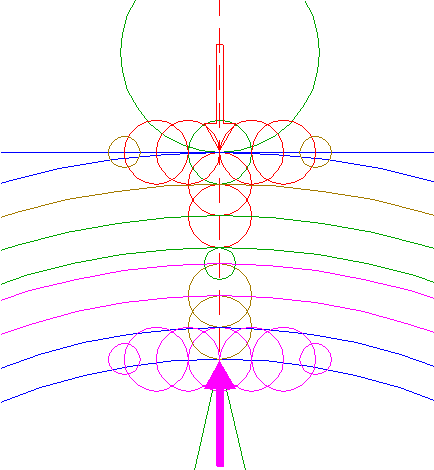
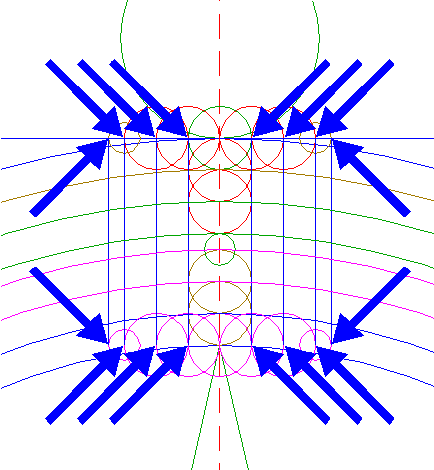
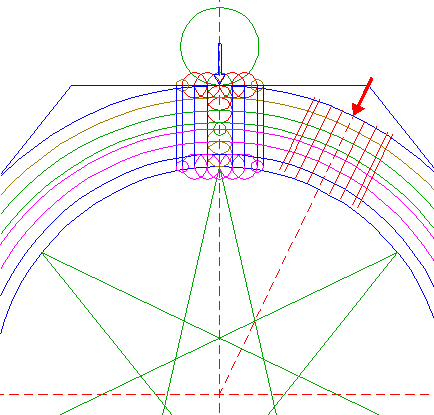
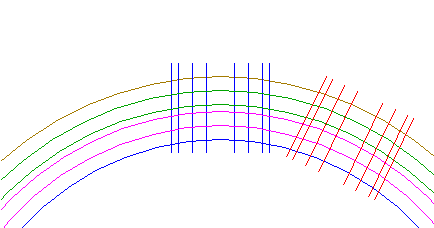
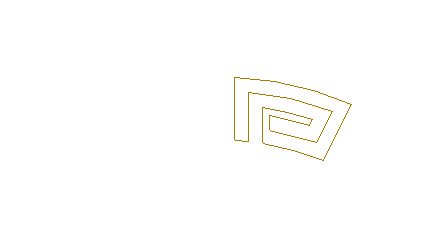
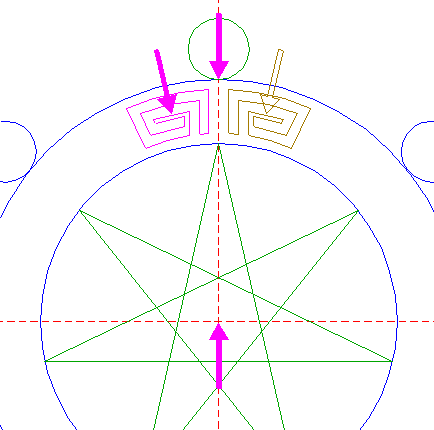
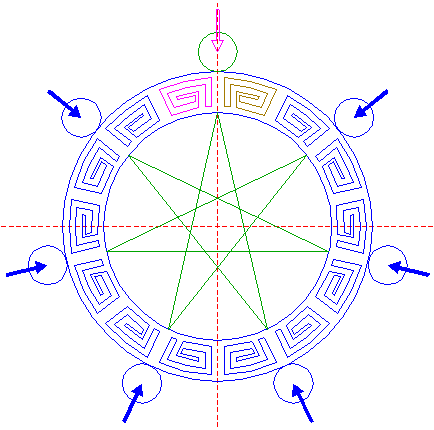

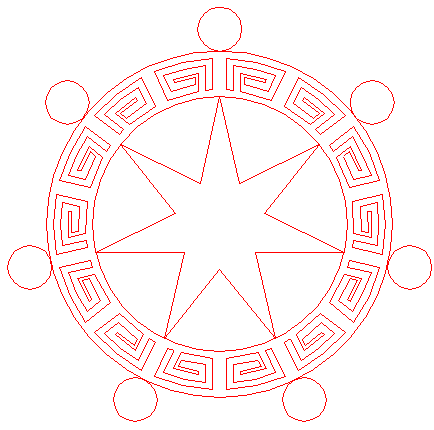
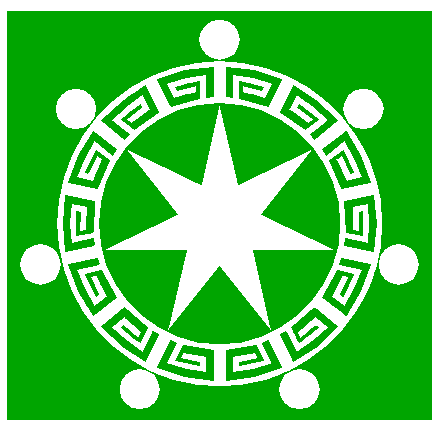
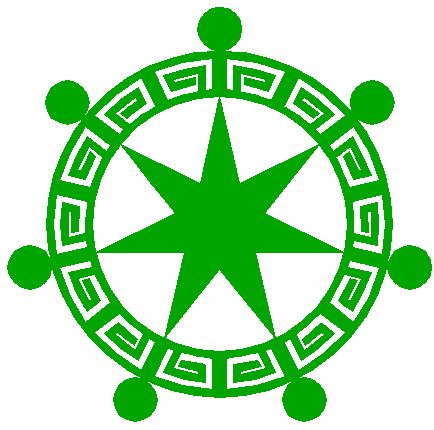
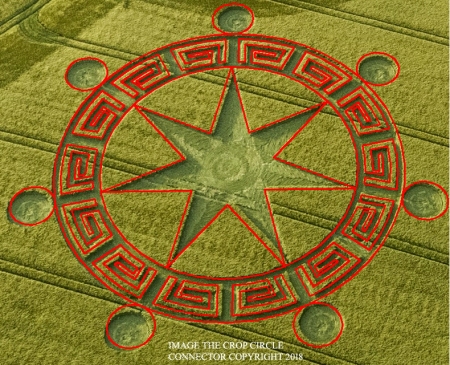
|
Reconstruction of the 2018 Ackling Dyke formation | ||
| 1. | 
| Draw a circle. Draw and extend the horizontal and vertical centerlines. |
| 2. | 
| Construct the inscribed heptagon (regular 7-sided polygon) of circle 1, pointing up. |
| 3. | 
| Draw the seven diagonals of heptagon 2, from each angular point to each third angular point. |
| 4. | 
| Construct a circle concentric to circle 1, passing through the second set of intersections (from the center) of diagonals 3, as shown. |
| 5. | 
| Copy circle 4 to the top of heptagon 2. |
| 6. | 
| Construct a circle concentric to circle 1, tangent to circle 5 at the upper side. |
| 7. | 
| Construct a circle centered at the lowest mutual intersection of diagonals 3, passing through the nearest intersection, as shown. |
| 8. | 
| Copy circle 7 to the upper intersection of circle 6 and the vertical centerline, and move this circle (copy and delete original) to its own corresponding intersection. |
| 9. | 
| Construct a circle concentric to circle 1, passing through the center of circle 8. |
| 10. | 
| Construct the inscribed heptagon of circle 9, pointing up. |
| 11. | 
| Copy circle 7 six times, to the other angular points of heptagon 10. |
| 12. | 
| Construct a circle centered at the rightmost of the set of innermost intersections of diagonals 3, tangent to the horizontal centerline. |
| 13. | 
| Copy circle 12 to the upper intersection of circle 6 and the vertical centerline. |
| 14. | 
| Construct a circle concentric to circle 1, tangent to circle 13 at the lower side. |
| 15. | 
| Copy circle 12 to the upper intersection of circle 1 and the vertical centerline. |
| 16. | 
| Construct a circle concentric to circle 1, tangent to circle 15 at the upper side. |
| 17. | 
| Copy circle 12 two times, the first to the lower intersection of circle 13 and the vertical centerline, the second to the corresponding intersection of the first. |
| 18. | 
| Construct two circles concentric to circle 1, tangent to circles 17 at the lower sides. |
| 19. | 
| Copy circle 12 two times, the first to the upper intersection of circle 15 and the vertical centerline, the second to the corresponding intersection of the first. |
| 20. | 
| Construct two circles concentric to circle 1, tangent to circles 19 at the upper sides. |
| 21. | 
| Construct the circumscribed heptagon of circle 6, pointing down. |
| 22. | 
| Copy circle 12 four times, two to both intersections of circle 13 and the upper side of heptagon 21, the other two to the corresponding intersections of the first ones. See detail. |

| ||
| 23. | 
| Construct a circle centered at the upper intersection of the outer circle 20 and the vertical centerline, tangent to the inner circle 18 at the upper side. |
| 24. | 
| Copy circle 23 two times, to the righthand intersection of the righthand circle 22 and the lefthand intersection of the lefthand circle 22, both with the upper side of heptagon 21. |
| 25. | 
| Copy circles 22 and 24 as a whole from the center of circle 13 to the center of circle 15. |
| 26. | 
| Draw two sets of four parallel lines, all parallel to the vertical centerline, one set tangent to the righthand sides of circles 13 and 15 and righthand circles 22, 24, and 25, the other set similar to the lefthand sides, as shown. |
| 27. | 
| Copy lines 26 as a whole, while rotating around the center of circle 1, about an angle corresponding with the upper righthand angular point of heptagon 21, as shown. |
| 28. | 
| Remove from circles 14, 16, 18, and 20, and lines 26, and 27, all parts, such that... |
| 29. | 
| ...the shown pattern remains. |
| 30. | 
| Copy pattern 29, while mirroring with respect to the vertical centerline. |
| 31. | 
| Repeat all steps necessary to create patterns 29 and 30 six more times, with respect to the centers of circles 11 in stead of circle 8, as shown. |
| 32. | 
| Circles 1, 6, 8, and 11, lines 3, and patterns 29, 30, and 31, are used for the final reconstruction. |
| 33. | 
| Remove all parts not visible within the formation itself. |
| 34. | 
| Colour all areas corresponding to standing... |
| 35. | 
| ...or to flattened crop, and finish the reconstruction of the 2018 Ackling Dyke formation. |
| 36. | 
| The final result, matched with the aerial image. |
| Copyright © 2018, Zef Damen, The Netherlands |